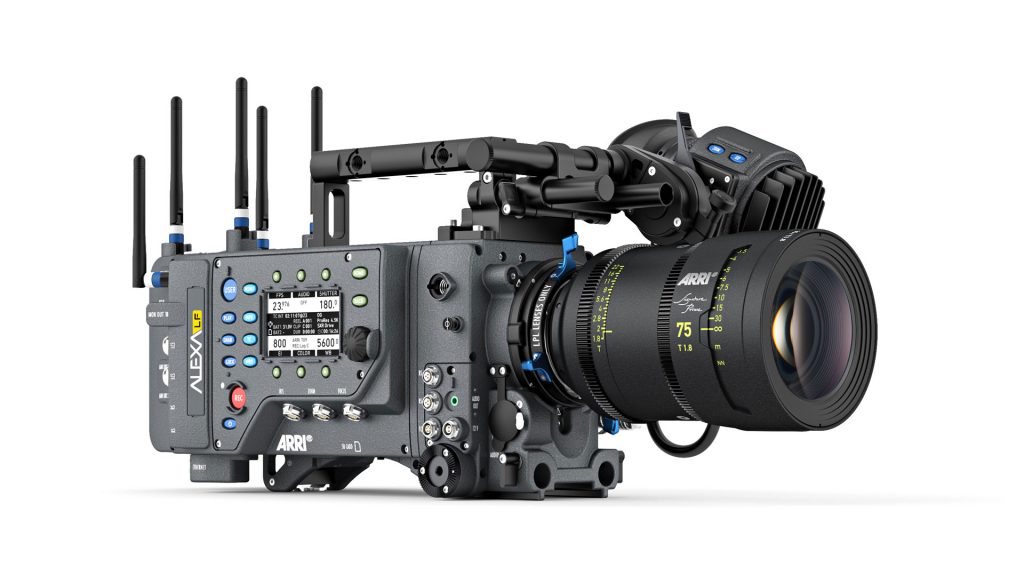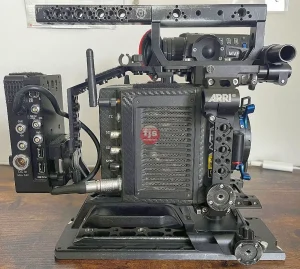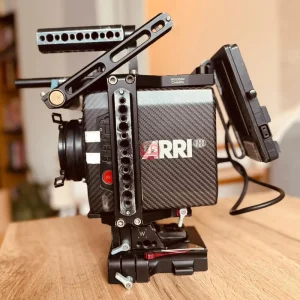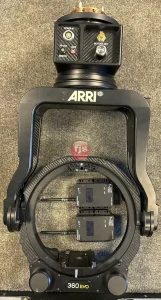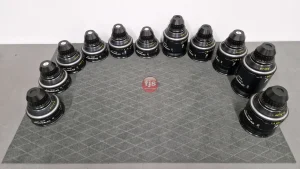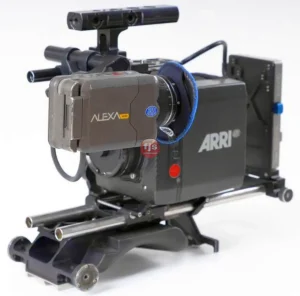ARRI lenses are a benchmark in the motion picture industry. They are not merely optics, but a core component of a holistic camera system, designed for seamless integration and consistent, repeatable results.
Key Features and Technical Advantages
- System Integration and Workflow Efficiency:ARRI’s core philosophy is “total system competence,” where lenses and cameras are designed to work together symbiotically. A prime example is the ARRI Lens Data System (LDS), a proprietary technology that provides real-time lens metadata to the camera and other production equipment. This metadata, which includes focus distance, iris settings, and zoom position, is critical for on-set monitoring, remote focus pulling, and streamlining visual effects and post-production workflows. This is a significant differentiator from many standalone lens manufacturers.
- Optical Character and “The ARRI Look”:While some lens brands are known for an aggressively sharp, high-contrast, or overly corrected aesthetic, ARRI lenses are celebrated for their natural and organic image quality. They are engineered to produce lustrous color rendition, particularly with pleasing and accurate skin tones. This is achieved through meticulous control of chromatic aberration and flare. The out-of-focus areas (bokeh) are consistently smooth and aesthetically pleasing, contributing to a rich, cinematic image full of vitality and emotion. ARRI’s Signature Primes, for example, are designed to deliver high resolution without the harsh “micro-contrast” often seen in modern, clinical optics.
- Superior Mechanical and Optical Consistency:ARRI lenses are built to be robust and reliable workhorses. A key benefit is the mechanical and optical consistency across an entire set of lenses. For example, the ARRI/ZEISS Master Prime series features a T1.3 maximum aperture and a patented Dual Floating Elements technology that virtually eliminates focus breathing—the change in focal length when adjusting focus. This level of precision and uniformity ensures that a cinematographer can switch between different focal lengths in a series without any noticeable shift in color, contrast, or image quality, which is crucial for continuity in a professional production environment.
- Proprietary Lens Mounts and Innovation:ARRI has pioneered and standardized several lens mounts, most notably the positive-locking PL (Positive Lock) mount, which has been an industry standard for decades. More recently, the company introduced the LPL (Large Positive Lock) mount to accommodate the larger sensors of modern digital cinema cameras like the ALEXA Mini LF. The LPL mount has a wider diameter and a shorter flange focal distance, enabling the design of lenses that can take full advantage of large-format sensors while maintaining a high level of optical performance.
- Collaboration with Leading Optics Partners:ARRI’s long-standing success is also attributed to its strategic collaborations with world-class optics companies. The 75-year partnership with ZEISS resulted in iconic lens lines like the Master Primes and Ultra Primes, which have shaped the language of modern cinema. Similarly, a partnership with Fujinon has led to the development of high-performance zoom lenses. This collaborative approach allows ARRI to define and specify the exact optical and mechanical characteristics required for their systems, ensuring exceptional quality and performance.
Questions and Answers
Q1: What is the ARRI Lens Data System (LDS) and why is it important?
A: The ARRI Lens Data System (LDS) is an electronic communication protocol integrated into the lens mount. It transmits real-time metadata from the lens to the camera and other connected devices, including focus distance, T-stop, and zoom position. This data is invaluable for on-set operations like remote focus and for post-production tasks like match-moving and visual effects integration, as it eliminates the need for manual data entry.
Q2: How do ARRI lenses differ in “look” from other brands like RED or Cooke?
A: ARRI lenses are known for their natural, organic, and clean aesthetic, prioritizing accurate color science and pleasing skin tones. In contrast, brands like RED are often associated with a higher-contrast, more dramatic image. Cooke lenses are famous for the “Cooke Look,” which is a warm, slightly softer, and more vintage-like aesthetic. While all are premium brands, ARRI’s reputation rests on its precise, reliable, and versatile image, which provides a neutral starting point for cinematographers to build their look upon.
Q3: What are some of the most notable ARRI lens series?
A: Several ARRI lens series are considered industry standards. The Master Primes are renowned for their incredible speed (T1.3) and lack of focus breathing. The Signature Primes are a newer line designed for large-format cameras, known for their ability to deliver a natural look on high-resolution sensors. The Ultra Primes offer a wide range of focal lengths and are valued for their lightweight design and consistent performance.
Q4: What is the difference between the PL and LPL mounts?
A: The PL (Positive Lock) mount has been the industry standard for cinema cameras for decades. The LPL (Large Positive Lock) mount is a newer standard developed by ARRI for large-format cameras. It has a wider diameter and shorter flange focal distance, which allows for the design of lenses with larger image circles that can cover the full area of modern large-format sensors, improving performance at the edges of the frame.
Conclusion
In the competitive landscape of professional cinema optics, ARRI’s lenses are distinguished by their exceptional build quality, remarkable optical consistency, and a deliberate design philosophy focused on system integration. Their reputation is built on a legacy of collaboration and a commitment to providing cinematographers with tools that deliver a clean, natural, and creatively flexible image, making them a top choice for high-end film and television production worldwide.

